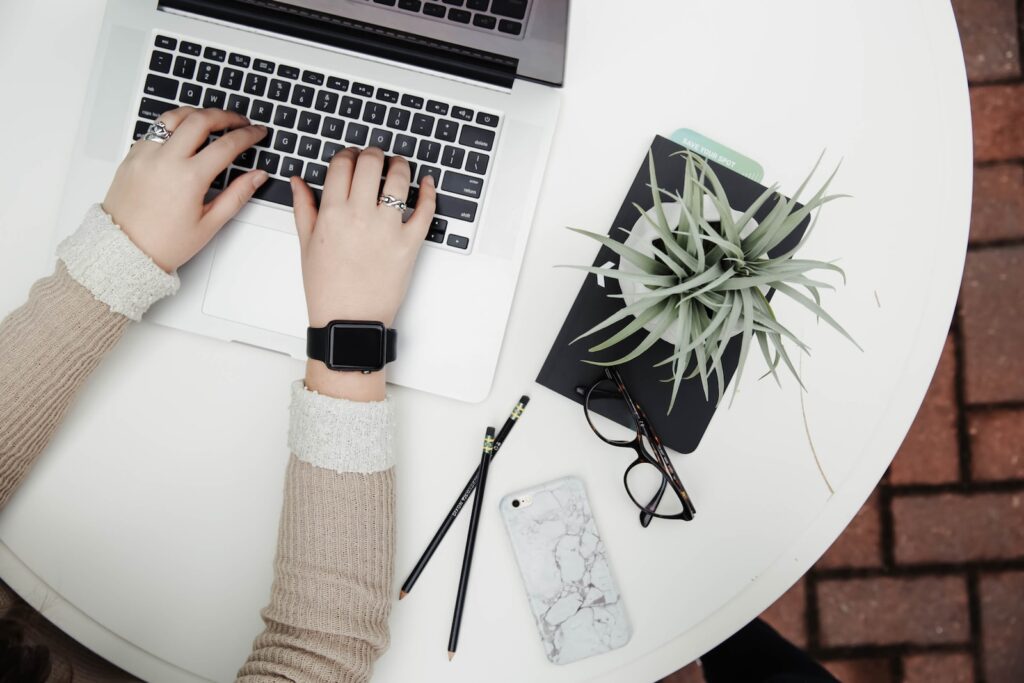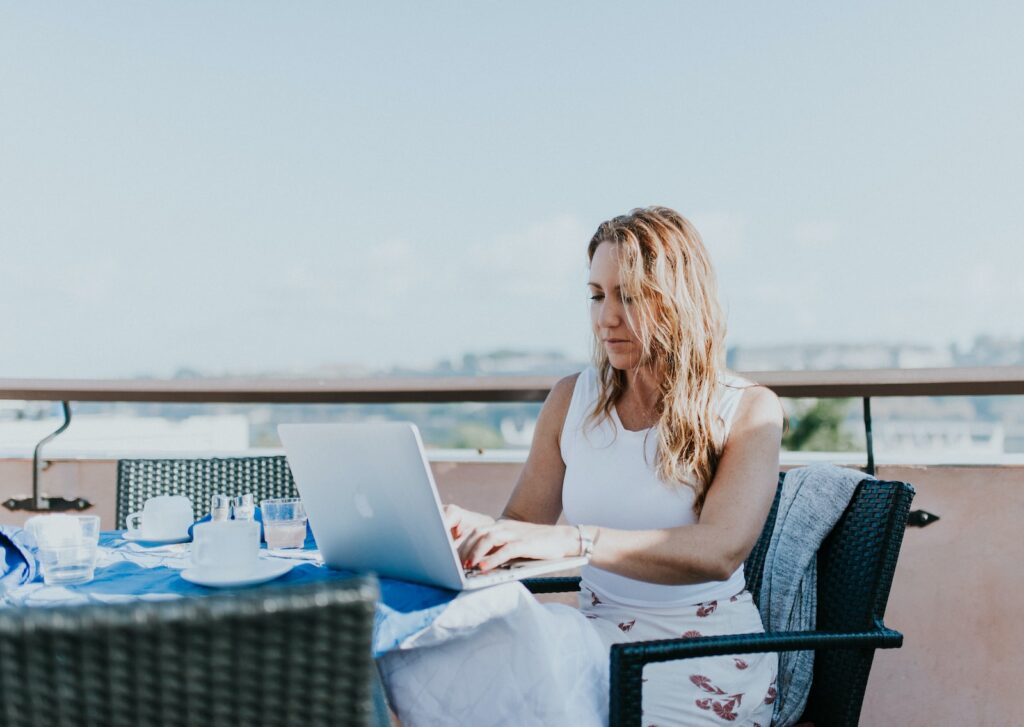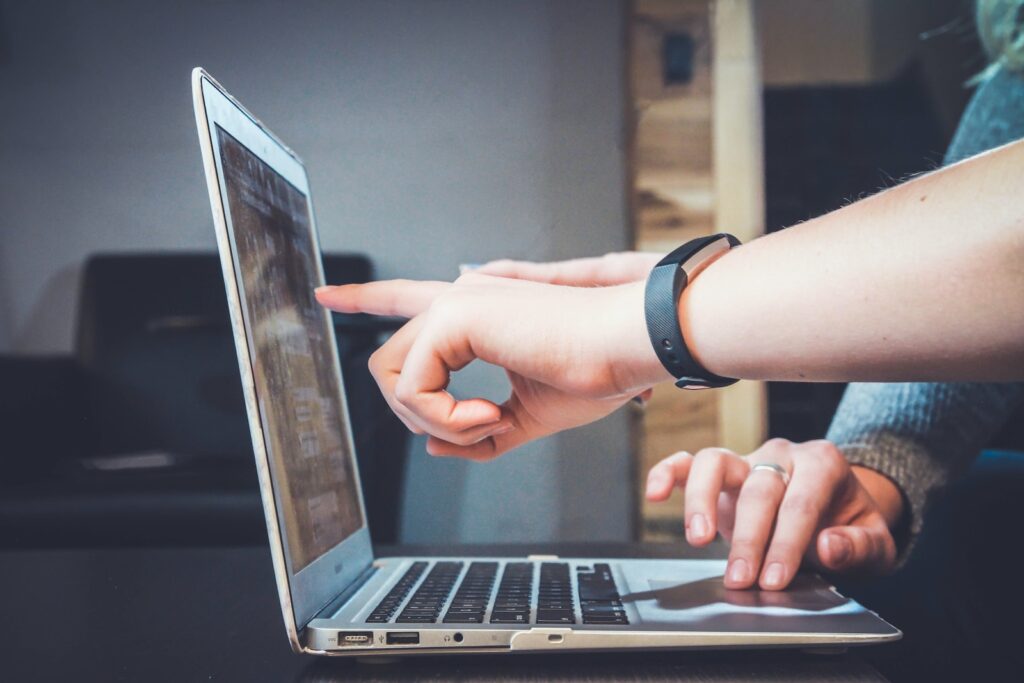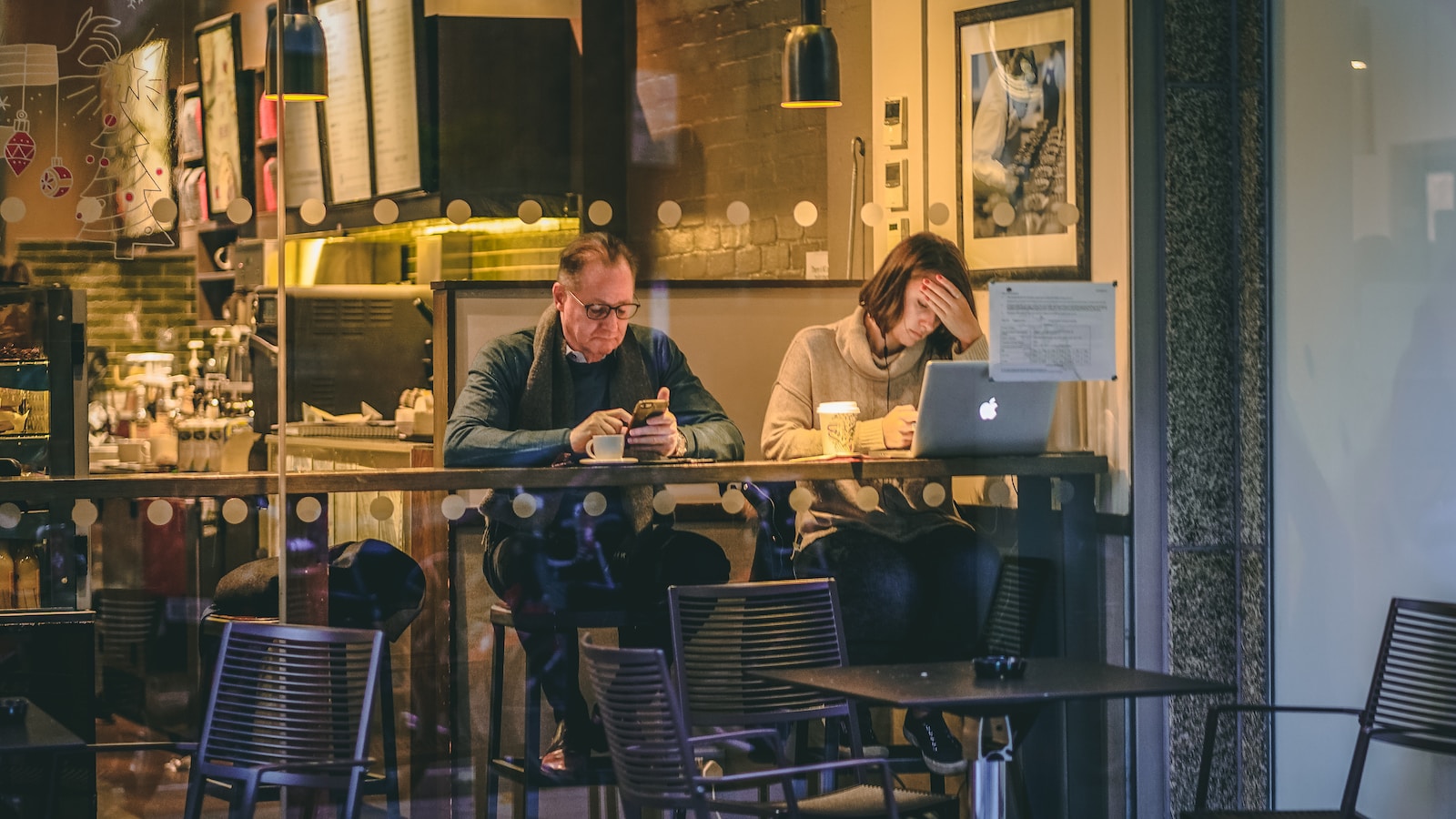Are you a blogger looking to create your own unique brand identity? One of the most important aspects of establishing yourself as a credible and recognizable blog is having an eye-catching logo that sets you apart from the rest.
As a graphic designer, I know firsthand how crucial it is to have a strong visual representation for your brand. Your logo should not only reflect your blog’s personality and values but also be memorable enough to stick in people’s minds long after they’ve left your site.
In this article, we’ll explore some tips and tricks on creating an effective blog logo that will not only make you stand out but also help establish trust with your readership.
So let’s get started!
The Importance Of A Strong Brand Identity

As a graphic designer, I understand the importance of building a memorable brand. Your logo is often the first thing people see when they come across your blog or website. It’s what sets you apart from competitors and makes you stand out in a crowded market.
A strong brand identity not only helps with recognition but also establishes credibility and trust with your audience. When someone sees your logo repeatedly, they start to associate it with your content, values, and overall message. This creates an emotional connection that can lead to increased engagement and loyalty.
In today’s digital age where everyone has access to design tools, creating a unique logo is essential. You want something that catches the eye, speaks to your niche, and leaves a lasting impression.
A well-designed logo reflects who you are as a blogger or business owner and communicates your story without saying a word. So take the time to craft a logo that truly represents you and watch as it becomes synonymous with everything you do.
Understanding Your Blog’s Personality And Values

As a graphic designer, understanding the importance of branding is crucial. It’s not just about creating a logo that looks good or catches people’s attention; it’s about defining your niche and communicating your values to potential readers. Without a strong brand identity, your blog can easily get lost among the thousands of other blogs out there.
When creating a unique blog logo, it’s important to consider whether you want to focus on branding or personal expression. Branding involves crafting an image that represents your blog and its values in a way that appeals to your target audience. Personal expression, on the other hand, focuses more on representing yourself as an individual blogger rather than promoting a specific brand.
Defining your niche is also essential when designing a blog logo. Your logo should clearly communicate what sets you apart from other bloggers and why someone should choose to read your content over others’. This could include elements such as color schemes, typography choices, and imagery that tie into your niche topic.
Remember: Your blog logo is often the first thing people will see when they come across your site. Make sure it accurately reflects who you are as a blogger while also effectively conveying what makes you unique within your niche.
By focusing on both branding and personal expression, you’ll create a design that truly stands out in the crowded world of blogging!
Choosing The Right Colors And Fonts For Your Logo

Once you have a clear concept in mind for your blog logo, it’s time to move on to choosing the right colors and fonts. This is where the real magic happens!
Just like an artist chooses their palette of paints carefully before starting a masterpiece, color psychology plays an important role in creating successful logos. Different colors evoke different emotions and can convey specific meanings.
For example, blue is often associated with trustworthiness and professionalism, while yellow represents joy and optimism. Red can signify passion or danger, depending on the context. As a graphic designer, understanding these associations and using them intentionally can help ensure that your logo resonates with your audience.
In addition to color psychology, font pairing techniques are also crucial in crafting a cohesive and effective logo design. Contrasting fonts that complement each other create visual interest while maintaining readability. It’s best practice to choose two or three fonts at most – any more than that can become overwhelming and distracting.
Remember: Your blog logo should accurately represent your brand identity while appealing to your target audience. Don’t be afraid to experiment with different combinations until you find the perfect match. With intentional use of color psychology and thoughtful font pairings, your unique blog logo will surely stand out from the crowd!
Incorporating Iconic Symbols And Imagery

I’m always looking for ways to incorporate iconic symbols and imagery when creating a blog logo.
Choosing the right one is key – it needs to be meaningful to your brand and visually appealing.
Designing with iconic imagery is also important – I often use elements of the symbol to create a unique look.
Incorporating brand colors is also a great way to tie the logo in with the rest of your branding – but be sure to keep the colors subtle and complementary.
All of these elements come together to form a unique logo that will be memorable to your audience.
Choosing A Symbol
As a logo designer, nothing excites me more than choosing the perfect symbol to represent a blog. A symbolic representation can make or break a brand’s identity and it is crucial that we choose wisely.
When deciding on a symbol for your blog, consider what cultural significance it holds. Does it have any relevant meaning in society? Will people easily recognize its relevance?
The key to selecting a symbol for your blog is ensuring that it aligns with your brand message and values. If you are running an eco-friendly blog, for example, incorporating imagery of nature would be ideal. This not only gives your audience a clear idea of what your content will be about but also helps create an emotional connection between them and your brand.
In conclusion, when choosing symbols for your blog’s logo design, always keep in mind their potential impact on branding efforts. Selecting something that has some cultural significance or personal value could greatly improve how effectively readers connect with the overall message of the site.
With this approach in mind, bloggers can create unique logos that resonate deeply with visitors while still remaining visually appealing and memorable over time.
Designing With Iconic Imagery
Now that we’ve established the importance of selecting a symbol for your blog’s logo design, let’s dive deeper into one aspect: Designing with Iconic Imagery.
As designers, it is important to make sure our logos are not only visually appealing but also memorable and easily recognizable.
One way to achieve this is by using negative space in your blog design. Negative space refers to the areas around and between objects in an image. By utilizing negative space effectively, you can create clever designs that catch people’s attention while still conveying a clear message about your brand.
Another approach to designing with iconic imagery is through minimalistic design. Minimalism involves stripping away all unnecessary elements from a design until what remains is simple yet powerful. This can be especially effective when incorporating symbols because it allows them to stand out even more prominently and convey their intended meaning clearly.
By considering these techniques when designing with iconic imagery, bloggers can create captivating logos that truly capture the essence of their brand. Through careful consideration of symbolism, use of negative space, and minimalist design principles, bloggers can craft logos that resonate deeply with visitors without being too overwhelming or confusing.
Incorporating Brand Colors
Now that we’ve discussed designing with iconic imagery, let’s move on to another important aspect of logo design: incorporating brand colors.
As a designer, it is crucial to understand color psychology and how certain hues can evoke different emotions in viewers. By selecting the right color palette for your brand, you can create a strong emotional connection with your audience.
When choosing colors for your logo, consider what message you want to convey about your blog or website. For example, if you’re running a health and wellness site, green might be an appropriate choice as it represents nature and growth. Alternatively, if you’re creating a tech-focused blog, using blue could communicate trustworthiness and intelligence.
It’s also important to ensure that your selected color palette works well together and complements any existing branding elements like typography or graphics. By thoughtfully incorporating brand colors into your logo design, bloggers can create logos that not only look visually appealing but also effectively represent their brand identity.
Designing For Scalability And Versatility

As a graphic designer, one must always consider scalability and versatility in their designs. This is especially important when creating a logo for a blog or website that may expand over time.
When designing for scalability, it’s crucial to keep in mind the different sizes the logo may need to be displayed in, from small favicon sizes on mobile devices to larger formats on desktops.
Designing for mobile optimization is also essential in today’s digital age. More people are accessing websites through their smartphones than ever before, so it’s critical that your logo looks just as good on a tiny screen as it does on a large monitor. Incorporating negative space can help with this by allowing the design to breathe and making sure all elements remain clear and distinct even at smaller sizes.
Incorporating these principles into your logo design will ensure that it remains relevant and effective no matter how much your brand grows or changes. By considering scalability and versatility, you’ll create a design that can adapt to any situation while maintaining its impact and recognizability.
Remember: A great logo isn’t just about looking pretty; it needs to work hard for your brand!
Testing And Refining Your Logo
Designing for scalability and versatility is crucial in creating a unique blog logo. As a graphic designer, it’s important to think about how the logo will look on different mediums such as social media profiles, merchandise, and business cards. The design should be adaptable and easily recognizable across all platforms.
Logo design trends are constantly evolving, but it’s essential to incorporate them strategically without compromising the brand identity. It’s also important not to follow every trend blindly because what may work for one brand might not work for another. A timeless design can stand the test of time while still being relevant and modern.
Creating a memorable brandmark takes more than just putting together shapes or typography. It involves understanding the target audience, researching competitors, and incorporating unique elements that differentiate the brand from others in the industry.
Testing and refining your logo through feedback and iteration helps ensure that you have created a strong visual representation of your brand.
Three things to keep in mind when designing a memorable logo:
1) Simplify: Keep the design clean and straightforward so that it doesn’t get lost among other visuals.
2) Consistency: Ensure that all aspects of branding including colors, typography, imagery align with each other
3) Uniqueness: Incorporate originality by adding small details or using unconventional color schemes
Remember that creating an effective logo requires patience, research, creativity, and experimentation. With these tools at hand, you can create a successful visual representation of your brand identity that resonates with your audience for years to come.
Implementing Your Logo Across Your Blog And Social Media Channels

As the saying goes, “First impressions are everything.” This is especially true when it comes to promoting your brand identity through your logo. Once you’ve created a unique and eye-catching logo for your blog, it’s time to implement it across all of your social media channels.
Using graphic design tools can make this process much easier. Many programs offer templates specifically designed for various social media platforms, allowing you to resize and adjust your logo as needed. Additionally, consider incorporating elements from your blog into your social media profiles, such as color schemes or fonts, to create a cohesive visual brand.
Now that you have a plan in place for implementing your logo on social media, it’s important to remember to stay consistent. Use the same profile photo and cover image across all platforms so that followers can easily recognize and associate them with your brand. By doing so, you’ll not only increase visibility but also build trust among readers who will come to know and appreciate your unique branding style.
| Platform | Profile Photo Size (Pixels) | Cover Image Size (Pixels) | Aspect Ratio |
|---|---|---|---|
| 180 x 180 | 820 x 312 | 1:4.5 | |
| 400 x 400 | 1500 x 500 | 3:1 | |
| 110 x 110 | 1080 x1080 | 1:1 |
By following these tips and utilizing graphic design tools effectively, you can successfully promote your brand identity through an eye-catching logo that resonates with both current and potential readers alike. Remember that consistency is key – by keeping things uniform across all platforms while still being creative within each one’s guidelines – you’ll establish yourself as a reliable source worth paying attention to!
Key Takeaways
- A unique blog logo is crucial for establishing a strong brand identity.
- Your logo should reflect your blog’s personality, values, and niche.
- Consider both branding and personal expression when designing your logo.
- Choose colors and fonts that align with your brand and appeal to your target audience.
- Incorporate iconic symbols and imagery to create a memorable logo.
- Design for scalability and versatility to ensure your logo remains effective as your brand grows.
- Test and refine your logo through feedback and iteration.
- Implement your logo consistently across all platforms and mediums to build brand recognition.
Final Thoughts
A unique blog logo is an essential part of building a strong brand identity. By understanding your blog’s personality and values, you can choose the right colors, fonts, and imagery to create a memorable logo that represents your brand effectively.
Incorporating iconic symbols and imagery can also help make your logo stand out from others in the crowded online space. As a graphic designer or logo designer, it is important to design for scalability and versatility. Your logo should look great across different mediums such as websites, social media profiles, business cards, and other marketing materials.
Testing and refining your logo is crucial to ensure its effectiveness in representing your brand. Once you have created the perfect logo, implementing it consistently across all channels will help build brand recognition among your audience. Remember that a unique blog logo not only helps establish credibility but also creates visual interest that captures attention instantly.
So go ahead and unleash your creativity while keeping these tips in mind!

